Previous Spotlight Exhibits
February-March 2024 | A Choir Book for Medieval Nuns
Displayed in the spotlight was a Processional that once belonged to a convent of Dominican nuns in Poissy, France.
This spotlight exhibit was curated by Kristina Kummerer (a Ph.D. student in the Medieval Institute) as part of a curatorial assistantship in Rare Books and Special Collections.
December 2023-February 2024 | A Warning Against Rum in Early America
Displayed in this spotlight was a 1835 poster commemorating a Salem, Massachusetts minister’s attack on a neighbor for distilling and selling rum. This particular copy was partially hand-colored in watercolor, preserved with a cloth backing, folded, and bound into a pocket-sized leather cover. The broadside is part of Hesburgh Library’s Rare Books and Special Collections’ collection of prints, posters, and broadsides.
This exhibit was curated by Rachel Bohlmann (Curator of North Americana, Rare Books and Special Collections).
October-November 2023 | Path to Sainthood: Brother Columba O'Neill
2023 marks the centenary of the death of Brother Columba O'Neill (born 1848), who was known as a man of prayer. He was known also for the great many people who were cured of illnesses following his prayers. Brother Philip Smith, CSC, oversees the processing of the vast collection of letters written to Brother Columba attesting to cures. He is also stewarding the cause for beatification.
Items on display in this spotlight were on loan from the Archives of the Congregation of the Holy Cross.
This exhibit was curated by Brother Philip Smith, CSC (Archivist, Midwest Province of the Congregation of the Holy Cross) and Aedín Ní Bhróithe Clements (Irish Studies Librarian).
August 2023-February 2024 | Football and Community at Historically Black Colleges and Universities
From its origins on campus in the late nineteenth century, football at Historically Black Colleges and Universities has held a central place in the African American sporting experience, in the landscape of Black higher education, and in the broader African American community.
This spotlight exhibited a selection of sources from the Joyce Sports Research Collection that preserve the history of HBCU football. The programs, media guides, ephemera, guidebooks, and other printed material on display documented the athletic accomplishments, the celebrations, the spectacle, and the community-building that accompany football at Historically Black Colleges and Universities.
This exhibit was curated by Greg Bond (Curator of the Joyce Sports Research Collection and Sports Subject Specialist).
Friday, September 1 at 2:00-4:00pm | Spotlight Exhibit Tour and Open House, with curator Greg Bond
Brief remarks by the curator about the exhibit at 2:15pm, but visitors were able to see the exhibit and browse additional historical material on display for the open house at any time between 2:00pm and 4:00pm.
August-September 2023 | Centering African American Writing in American Literature
Decades before Alex Haley's Roots swept to number one on the New York Times Best Seller List in 1976, writing and editing produced by African Americans was central to twentieth-century American publishing. Literary production was interracial. This spotlight presented examples of mid-century books by African Americans whose designs—from dust jackets to illustrations to bindings and paper quality—conveyed their centrality in publishing and American literature.
This exhibit was curated by Korey Garibaldi (Assistant Professor of American Studies) and Rachel Bohlmann (Curator of North Americana).
Tuesday, September 19 at 4:00pm | Centering African American Writing in American Literature lecture
American Studies Professor Korey Garibaldi drew on his new book, Impermanent Blackness: The Making and Unmaking of Interracial Literary Culture in Modern America (Princeton, 2023), and on recent library acquisitions to discuss how, during the middle of the twentieth century, modern American literature and its production were interracial. He explored multiple aspects of American literary creation, including how African American content has been embodied in dust jacket and cover designs, illustrations, the style of type and bindings, and the overall production quality.
June-July 2023 | A Medieval Franciscan Manuscript from the Netherlands
This exhibit highlighted the collaborative production of a medieval book in 1475 between two Franciscan friars in Sluis and Gouda.
This exhibit was curated by David Gura, PhD (Curator, Ancient and Medieval Manuscripts, Early Modern and Modern European Manuscripts).
May-August 2023 | New York City Surrealism and Texas Progressivism in the 1940s
This spotlight exhibit featured select issues from two recently acquired limited runs of American periodicals from the 1940s, New York's View and The Texas Spectator.
This exhibit was curated by Rachel Bohlmann, PhD, (Curator of North Americana and American History Librarian).
April-May 2023 | Hagadah shel Pesaḥ le-zekher ha-Shoʼah - Pessach Haggadah in memory of the Holocaust
This spotlight exhibit commemorated Holocaust Remembrance Day (Yom HaShoah) which, according to the Jewish calendar, takes place on the 27th day of the month of Nisan, shortly after Passover (Pessach). This year Yom HaShoah was observed on April 18th. On display were three leaves from a special limited illustrated edition of Pessach Hagaddah.
This exhibit was curated by Natasha Lyandres (Russian and East European Studies Librarian).
February-April 2023 | Language and Materiality in Late Medieval England
The materials on display in this exhibit examined the movement and transformation of late Middle English texts from the manuscript culture of the fifteenth century through the advent of early printing and even into the seventeenth century.
This exhibit was curated by David T. Gura, PhD, (Curator, Ancient and Medieval Manuscripts, Early Modern and Modern European Manuscripts).
February-March 2023 | “That Just Isn’t Fair; Settling for Left-Overs”: African American Women Activists and Athletes in 1970s Feminist Magazines
This exhibit presented a selection of magazine articles by or about African American women from a number of popular, feminist periodicals created across the decade of the 1970s that RBSC has recently added to our collections. In these publications, which largely targeted white audiences, Black women claimed new platforms for their voices and ideas.
This exhibit was curated by Rachel Bohlmann (American History Librarian and Curator) and Greg Bond (Sports Archivist and Curator, Joyce Sports Research Collection).
For more information about the exhibit, read the related blog post.
December 2022-January 2023 | The Ladies Flower-Garden of Ornamental Annuals
This exhibit presented the first volume from a series of books about ornamental flowers in British gardens written and illustrated by Jane Webb Loudon.
This exhibit was curated by Natasha Lyandres (Russian and East European Studies Librarian).
November 2022-January 2023 | Hesburgh Library Special Collections: A Focus on W. B. Yeats
The poet and playwright Willam Butler Yeats (1865-1939), a leader in the Irish Literary Revival, visited the University of Notre Dame on two occasions. This spotlight exhibit displayed just a few examples from the extremely rich Yeats Collection in the Hesburgh Library Special Collections.
This exhibit was curated by Aedín Ní Bhróithe Clements (Irish Studies Librarian).
October-November 2022 | "Rosie the Riveters with a Vengeance" and Other Wartime Contributions by American Women
Recent acquisitions to the library's specialized collections in American history focus on women during World War Two (1939-1945), offering markedly different perspectives on how American women contributed to the war effort.
The first is a book of cartoons created by an executive secretary to a Rear Admiral, in which she pokes fun at her superiors and war-time working conditions. The second is a scathing report by the National Urban League on racial discrimination within the defense industry, which hit African American women hard. As a result of pressure from sources like this one, eventually 600,000 African American women entered wartime industries. The last piece is a hand-made directory for members of a unit in the Women's Army Corps, the women's branch of the US Army. This unit saw a year of active service in Italy from 1943 to 1944.
This exhibit was curated by Rachel Bohlmann (American History Librarian and Curator of North Americana).
For more information about the book of cartoons featured in the exhibit, read the post on the RBSC blog.
September-October 2022 | A Day in a Life of the Warsaw Ghetto in Photographs
Special Collections recently acquired two World War II era photo albums featuring original photographs from within and outside of the Warsaw Ghetto’s walls. The albums were on display as the September-early October spotlight exhibit in Special Collections.
This exhibit was curated by Natasha Lyandres (Russian and East European Studies Librarian).
Following the exhibit, the albums were completely digitized. They are now available online in Marble (Museums, Archives, Rare Books, and Libraries Exploration).
For more information about the exhibit, read the related post on the RBSC blog.
May-August 2022 | Fifties Flair and Seventies Feminism Presented by Two Magazines
Special Collections recently acquired two American magazines from the mid-twentieth century—Flair (1950) and Up from under (1970-1973). Although at first glance they appear as different as Liz Taylor and Gloria Steinem, the titles have similarities in addition to their clear differences. Both, for example, used the serials medium to command striking visual impact, albeit in different ways for very different ends.
This exhibit was curated by Rachel Bohlmann (American History and American Studies Librarian).
April 2022 | Remembering Early England
This spotlight exhibit, Remembering Early England, brought together diverse materials that reveal the power of memory. Featuring an eleventh-century coin, a fifteenth-century medieval manuscript, an early printed grammar book, and a Victorian map, this exhibit was a sample of the breadth of the Hesburgh Library’s Special Collections. Each object represented the different ways that each generation has depicted the early English period (ca. 449 – 1066), whether or not their version of history reflected reality.
This exhibit was co-curated by Dr. David T. Gura (Curator of Ancient and Medieval Manuscripts) and Anne Elise Crafton (PhD Candidate in the Medieval Institute and Graduate Curatorial Assistant).
For more information about the exhibit, read the related blog post.
January - June 2022 | 100 Years of James Joyce's Ulysses
This spotlight exhibit celebrated the centenary of the publication of James Joyce's groundbreaking novel, Ulysses. The novel was published by bookseller Sylvia Beach, the American owner of Paris bookshop Shakespeare and Company. The first printed copies arrived in time for Joyce's fortieth birthday, February 2, 1922.
This semester-long exhibit consisted of the earliest editions of Joyce's Ulysses held in the Hesburgh Libraries Special Collections: the first edition (1922) published by Beach’s Shakespeare and Company, along with the first English edition (1922) published by Harriet Weaver's Egoist Press. Also on display was a later magazine, Two Worlds Monthly, along with an "International Protest" against the plagiarism carried out by that magazine.
This exhibit was curated by Aedín Ní Bhróithe Clements (Irish Studies Librarian).
January - March 2022 | Eccles Street, a print from In Medias Res, The Ulysses Maps: A Dublin Odyssey by David Lilburn
This exhibit was curated by Aedín Ní Bhróithe Clements (Irish Studies Librarian).
August - December 2021 | Limited Edition Photo Album of the Sistine Chapel
Despite the challenges of the last academic year and thanks, in no small part, to the generosity of our donors, Special Collections’ holdings continued to grow. This spotlight exhibit celebrated one recent gift: the three-volume limited edition photo album of the Sistine Chapel. An anonymous donor presented this magnum opus to the Hesburgh Libraries in February 2021.
This exhibit was curated by Natasha Lyandres, Head, Rare Books and Special Collections.
August - December 2021 | The Ferrell Manuscripts
The Fall 2021 spotlight exhibit featured six medieval manuscripts donated to the University of Notre Dame by James E. and Elizabeth J. Ferrell. The collection features a diverse group of manuscripts from the thirteenth through fifteenth century including a historiated Bible, book of hours, a tarot card, and illuminations. The Ferrell Collection can also be discovered digitally.
This exhibit was curated by David T. Gura, Ph.D. (Curator, Ancient and Medieval Manuscripts).
For more information about the collection and the exhibit, read the related blog post.
No phyisical exhibits were hosted
from Spring 2020 through Summer 2021
due to the COVID pandemic.
March 2020 | The Papers of Mary Taussig Hall
Mary Taussig Hall was a social worker, community organizer, and activist whose commitment to the Progressive causes of peace and racial equality spanned most of the twentieth century. The items on display from her papers describe Mary’s path to activism as a young woman as well as her accomplished career in social work and advocacy.
This exhibit was curated by Arielle Petrovich, Instruction & Outreach Archivist, Librarian-in-Residence.
February 2020 | Ruskin, Turner, and Popular Taste
In conjunction with the conference "John Ruskin: Prophet of the Anthropocene", held at Notre Dame February 7-8, 2020, this exhibit featured materials from Special Collections relating to John Ruskin and J. M. W. Turner.
This exhibit was curated by Robert Goulding, Director, Program in History and Philosophy of Science, University of Notre Dame, and Sara Maurer, Associate Professor of English, University of Notre Dame.
February-April 2020 | John Ruskin and Popular Taste
In conjunction with the conference "John Ruskin: Prophet of the Anthropocene", being held at Notre Dame February 7-8, 2020, this exhibit featured materials from Special Collections relating to John Ruskin and his influence.
This exhibit was curated by Robert Goulding, Director, Program in History and Philosophy of Science, University of Notre Dame, and Sara Maurer, Associate Professor of English, University of Notre Dame.
December 2019-January 2020 | Irish Art and Literature from Graphic Studio Dublin
To complement the Snite Museum’s exhibition of Irish art, this Spotlight exhibit showcased the work of the Graphic Studio Dublin. One Sponsor’s Portofolio from the collection has been selected, a collaboration between artists and a writer, producing works inspired by a single word. ‘Synapse’ is in the background of Anne Enright’s writing, along with the prints by artists Clare Henderson, Colin Martin and Niamh McGuinne. This is just one of the many examples of Irish art available for viewing in the Hesburgh Special Collections.
This exhibit was curated by Aedín Ní Bhróithe Clements, Irish Studies Librarian and Curator of Irish Studies Collections.
October-November 2019 | Knute Rockne All American
A display of materials from the University Archives.
This exhibit was curated by Elizabeth Hogan, Photo Archivist, University Archives.
August-September 2019 | Art in a 19th-Century Household in Ireland: The Edgeworth Family Album
The Edgeworth Family Album that was this Spotlight Exhibit is an unusual collection of drawings and sketches by members of the remarkable Edgeworth family of County Longford, Ireland. Much is known about the literary and scientific endeavors of this family — the writer Maria Edgeworth was the eldest daughter of this family — but the drawings in this album provide new insight into the interests and preoccupations of family members.
Frances Beaufort, the fourth wife of R. L. Edgeworth, was an accomplished artist. According to Edgeworth's Memoir, Frances had been asked to provide sketches for a proposed illustrated edition of Maria Edgeworth's The Parents' Assistant. When Mr. Edgeworth visited the Beaufort home and viewed the sketches, he and Frances began a relationship that would lead to marriage. Thus Frances Beaufort brought her artistic talent and training into the Edgeworth household and encouraged her children and stepchildren to draw.
This exhibit was curated by Aedín Clements, Irish Studies Librarian.
June-August 2019 | Libros de Lectura: Literacy and Education after the Mexican Revolution / Alfabetismo y Educación después de la Revolución Mexicana
In the aftermath of the Mexican Revolution (1910-1920), intellectuals envisioned a new national identity that would include all members of society and embody revolutionary values. The country's newly re-formed Ministry of Public Education identified literacy as central to the creation of that identity.
This exhibit showcased literacy-related materials sponsored, approved, or produced by Mexico's Ministry of Public Education, from the 1930s through the mid-1960s. Included were textbooks for children and books promoting literacy among adults, whether workers or indigenous Popoloca-speakers. These items reflect the ministry’s diverse efforts as well as a changing political context in the decades after the Mexican Revolution.
This exhibit was curated by Erika Hosselkus, Curator, Latin American Collections, RBSC. For more information about the exhibit, read the related blog post.
June-July 2019 | Take Care of my Ghost, Ghost: The Friendship of Allen Ginsberg and Jack Kerouac
Jack Kerouac and Allen Ginsberg were frequent companions. They were travel buddies. They were, on occasion, party animals. They were also titans of late 20th century literature with a wide-reaching impact still felt today in literature, music, and film. They influenced each other not just as friends, but as writers.
Several items from the Robert Creeley Collection were on display in this exhibit, as examples of this: Kerouac's San Francisco Blues and Ginsberg's Declaration of Independence for Dr. Timothy Leary: July 4, 1971 showcase how each were ambidextrous in their written craft. Take Care of my Ghost, Ghost: Allen Ginsberg & Jack Kerouac is a gem of a collection originally published in just 200 copies for friends, containing writings from the two from letters and journals that aren’t as well known.
This exhibit was curated by Amanda Gray, MLS Candidate, Indiana University Purdue University Indianapolis, and RBSC Intern. For more information about the exhibit, read the related blog post.
May 2019 | Blasphemous Fun: Late Medieval and Early Modern Games of Chance and Fortune
This spotlight exhibit, on display throughout May 2019, highlighted two works on medieval and early modern books on fortune-telling games from RBSC's collections: a modern facsimile of the 1482 manuscript of the Libro delle Sorti, or Book of Fates, and a 1615 edition of Jean de Meun's Dodechedron de Fortvne. Dice games like those described in these works served as entertainment and pastimes for medieval and Early Modern readers.
This exhibit was curated by Eve Wolynes, student employee in RBSC and PhD candidate in the History Department, University of Notre Dame. For more information about the exhibit, read the related blog post.
March-May 2019 | The Work of Our Hands: A Multi-Venue Exhibition of Liturgical Vestments
In keeping with the theme of the 2018–19 Notre Dame Forum, The Catholic Artistic Heritage: Bringing Forth Treasures New and Old, four exceptional items were carefully selected from Notre Dame's collection of liturgical vestments as part of this multi-venue exhibition, The Work of Our Hands. On exhibit in Rare Books and Special Collections was a miter belonging to Archbishop Lamy, the first archbishop of the Diocese of Santa Fe, New Mexico, and related texts.
There was a Guided Walking Tour of the exhibition sites on April 11 at 4:00 p.m. beginning at the Hesburgh Library lobby. A panel discussion and reception followed in the Annenberg Auditorium of the Snite Museum of Art.
March-April 2019 | Purchas his Pilgrimes and John Smith
On display in this spotlight exhibit were two of the four volumes of volumes of Samuel Purchas’s 1625 compendium of travel narratives Purchas his Pilgrimes. One of the great points of interest in these books, included in the display, is John Smith’s map of Chesapeake Bay showing the Powhatan Indian villages of the region and the new English settlement of Jamestown.
This exhibit was curated by George Rugg, Curator, Special Collections.
January-March 2019 | Creeley/Marisol: Presences
Among the thousands of volumes in the personal library of the distinguished American poet Robert Creeley (1926-2005) are Creeley's copies of Presences: A Text for Marisol (New York: Scribner's, 1976). The book is a collaboration between Creeley and the Venezuelan sculptor Marisol Escobar, with 30 pages of prose poetry published adjacent to 61 black-and-white photographs of Marisol's works. As was his habit, Creeley used the paper-bound copy of Presences as a kind of filing cabinet for ephemera relating to its publication: some of the letters, postcards, photographs, and reviews found inside the volume are shown on the shelf below.
This exhibit was occasioned by the 2018 publication of a critical edition of Presences, edited by Stephen Fredman, Professor Emeritus of English at the University of Notre Dame and was curated by George Rugg, Curator, Special Collections. The Hesburgh Libraries acquired Creeley's personal library of more than 6,000 volumes in 2012.
January-February 2019 | Theresienstadt (Terezín)
Established by the Nazis in Terezín in northwestern Czechoslovakia in 1941, Theresienstadt served as both a ghetto and a transit camp for Jews before being deported to one of the extermination camps. The Nazis, however, went to great lengths to present this detention center as a "model Jewish settlement" and to hide the role it played in their plan to systematically exterminate the Jewish people. In an elaborate ruse, they created fake ration cards, contracts for home purchases, deposits for rent, special currency, and even beautified the camp, renovating barracks and planting gardens, before the International Red Cross visited the camp in 1944.
Between November 24, 1941 and May 9, 1945, over 141,000 Jews including about 15,000 children were transported to Theresienstadt. Of these Jews, about 33,500 died in Theresienstadt and more than 90,000 were deported to death camps in eastern Europe.
This exhibit, highlighting some of RBSC's Holocaust-related materials, was curated by Julie Tanaka, Curator, Special Collections.
January 27, 2019—International Holocaust Remembrance Day—commemorates the memory of the victims of the Holocaust.
November-December 2018 | Delamarche's États-Unis de l'Amérique septentrionale: The United States in 1785
On display through the end of 2018 was a French map of the United States and adjoining areas created shortly after the end of the Revolutionary War, showing the new nation's boundaries and those of its constituent states.
This exhibit was curated by George Rugg, Curator, Special Collections.
September-October 2018 | A Modern Prometheus: Balancing Science and Ethics
Images of Mary Shelley's monster being created by the mad scientist delight and horrify audiences. Yet, these images also illuminate larger issues about humans and science. Showcased in this display were Humphry Davy's Elements of Chemical Philosophy, J. E. Ford's Popular Science essay "Can Science Raise the Dead?" and David Plunkert's new, illustrated edition of Frankenstein.
This exhibit was curated by Julie Tanaka, Curator, Special Collections.
August-December 2018 | Frankenstein 200
Mary Shelley's imagination created a monster who has captured artistic imaginations for two centuries. Theodor von Holst introduced the monster visualy in 1831, in the first illustrated edition. His creation remained the main representation until the 20th century when Jack Pierce and his makeup wizardry made Boris Karloff the iconic monster. Variations of this icon abound on covers of comic books and magazines. This exhibit celebrated his birthday with a visual tour in Special Collections' fall spotlight exhibit Frankenstein 200.
This exhibit was curated by Julie Tanaka, Curator, Special Collections.
July-August 2018 | The Forbes Simulachres: The "Dance of Death" Reimagined
Artist Didier Mutel adapts Hans Holbein's "Dance of Death" skeletons to apply to individuals from Forbes Magazine's annual list of the world's wealthiest people. Showcased in this display were plates from Mutel's oversized portfolio, juxtaposed with Holbein's woodcuts from 1538.
This exhibit was curated by Marsha Stevenson, Visual Arts Librarian.
April-August 2018 | Chaste, Choice and Chatty: Irish‑American Periodicals of the Nineteenth Century
This spotlight exhibit displayed a small selection from the Irish-American periodical collection at Notre Dame's Special Collections. These periodicals circulated in the late nineteenth century, and provide an intriguing view of the ways in which a distinct Irish-American culture developed, and of the identification of the Irish with the Catholic Church. From illustrated weekly magazines to almanacs, the Hesburgh Library's collection covers an array of these publications. The description of McGee's Illustrated Weekly as 'chaste, choice and chatty' is an indication of the style of literature aimed at by some of the editors.
The exhibit was curated by Aedín Clements, Irish Studies Librarian.
May-June 2018 | Jesuit Science in 17th and 18th Century China
During the 17th and 18th centuries, missionaries from the Society of Jesus introduced European science to China and used it for a novel purpose, spreading Catholicism among the Chinese ruling class. Displayed in this month were four fascinating works from this endeavor, highlighting the tremendous efforts by Jesuits and the historical background in which they operated.
This exhibit was curated by Yang Wu, Librarian in Residence.
April 2018 | From Distant Waters: Whaling Manuscripts in Special Collections
Shown this month were three whaling manuscripts dating from the golden age of the American whaling industry in the first half of the nineteenth century. These included two ship's logbooks, from the whaling vessels Meridian and Corvo, and a letter written aboard the whaler Columbus.
This exhibit was curated by George Rugg, Curator, Special Collections.
November 2017-April 2018 | Baseball and Tin Pan Alley: Sheet Music from the Joyce Sports Collection
In 2015 RBSC acquired a collection of more than 450 examples of baseball-related sheet music, dating from before the Civil War to the late 20th century. On display in this spotlight exhibit was a small sampling of the collection, with items ranging from the early days of baseball to the end of the Tin Pan Alley era.
The examples on display in this spotlight exhibit were selected from Special Collections' Baseball Sheet Music Collection.
The exhibit was curated by George Rugg, Curator, Special Collections.
March 2018 | A Beneventan Fragment
On display was a manuscript fragment written in Beneventan minuscule, the script associated with the great Benedictine abbey of Monte Cassino. The fragment contains music for the feast of the Epiphany and survived because it was reused as the cover of a later printed book.
This exhibit was curated by David T. Gura, Curator, Ancient and Medieval Manuscripts.
January-February 2018 | Reading the Emancipation Proclamation
Abraham Lincoln issued the Emancipation Proclamation on January 1, 1863. This 1864 steel engraving by James W. Watts was adapted from a drawing, Reading the Proclamation of Emancipation in the Slaves' Cabin, by New York City artist Henry Walker Herrick. Very few pictorial depictions of the proclamation were made before Lincoln's assassination in 1865 and this is the only contemporary image that offers an interpretation of how it might have been received by the people it was intended to free.
The print was acquired by Rare Books and Special Collections in 2017.
This exhibit was curated by Rachel Bohlmann, American History Librarian.
November-December 2017 | Building A Colonial Mexican Tavern: Archive of the Pulquería El Tepozán
The spotlight exhibit highlighted a manuscript archive for the pulquería El Tepozán, which includes real estate, licensing, and planning documents, and was recently acquired by Special Collections. On display was large-format plan depicting the proposed location and orientation of a Mexican tavern (pulquería). The plan is for one of four such establishments built by nobleman don Pedro Romero de Terreros, the Count of Regla, in Mexico City, beginning in the final years of the 1770s.
This exhibit was curated by Erika Hosselkus, Curator, Latin American Collections.
October 2017 | Images of David and Goliath in the Sixteenth Century
"Root for the underdog." "Champion the little guy." These thoughts often go hand-in-hand when it comes to David—armed with a mere sling and rock—taking on the mighty, armor-clad, javelin-wielding giant, Goliath.
On display was an intriguing, action-filled depiction of this famous battle by Swiss artist, Tobias Stimmer (1539-1584). Stimmer's woodcut compresses different moments of the action into a single image. His woodcut accompanies the description of this event by the 1st-century Jewish historian Flavius Josephus in Conrad Lauterbach's 16th-century German translation of Josephus' collected works.
The Special Collections spotlight exhibit for October featured Stimmer's interpretation of this battle. For another take, the viewer was invited to take a walk to the Snite Museum where the Snite presents Rembrandt's David and Goliath (1655). Rembrandt's etching is on display through November 26, 2017 in the fall exhibition, Rembrandt's Religious Prints: the Feddersen Collection at the Snite Museum of Art.
This exhibit was curated by Julie Tanaka, Curator, Special Collections.
September 2017 | The Art of Botanical Illustration: Philip Miller’s Gardeners Dictionary
Philip Miller, one of 18th century England’s most celebrated horticulturalists, produced the acclaimed Gardeners Dictionary in eight editions. This display featured the illustrated volumes accompanying the 7th edition (1755-1760). These books are part of a collection bequeathed to Notre Dame by the prominent botanist Edward Lee Greene.
This exhibit was curated by Marsha Stevenson, Visual Arts Librarian.
July-August 2017 | War as Child's Play: German Children's Literature from the World Wars
Patriotism and militaristic pride abound in two colorful picture books from the World Wars, Hurra! Ein Kriegs-Bilderbuch by Herbert Rikli and Manövertag: Ein Soldatenbilderbuch by Erich Rohden and illustrated by Fritz Koch-Gotha. The books were used as propaganda to instill war-time values. Hurrah! tells the story of a boy who exhibits all of the qualities of a good German soldier, fighting valiantly to defeat Germany's enemies. Manövertag is a telling example of National Socialist propaganda promoting the duties of good German boys.
This exhibit was curated by Sara Quashnie, who is a MLIS Candidate at the University of Illinois, Urbana-Champaign, with some help from Julie Tanaka. Sara was completing a practicum this summer at Hesburgh Library with Julie and Rachel Bohlmann in preparation for a career in academic libraries.
June-October 2017 | "Which in future time shall stir the waves of memory"
Friendship Albums of Antebellum America
Among the characteristic manuscript forms of antebellum America are albums filled with poetry, prose, drawings, and other content created for the book's owner by family and acquaintances. Such friendship albums, as they are called, have a long history, but they were especially prevalent in the Romantic era, with its new ideology of sentimental friendship. In the United States friendship albums begin to appear in number in the 1820s, and while contributors were often male, the albums themselves were usually maintained by young women.
The manuscripts on display in this spotlight exhibit were selected from Special Collections' manuscripts of North America holdings.
The exhibit was curated by George Rugg, Curator, Special Collections.
June 2017 | J. P. Homann's "Buffalo Map," ca. 1720
On display was a map of North America by the important German cartographer J. P. Homann, emphasizing French claims in the Mississippi River Valley in the early eighteenth century. The map is one of several hundred items making up the Edward and Sheila Scanlan Collection of Maps of the Great Lakes Region, donated by the Scanlans to the Hesburgh Libraries in 2003-04.
The exhibit was curated by George Rugg, Curator, Special Collections.
April 2017 | Exhibition of Artifacts from Mother Cabrini's Archive
Saint Frances Xavier Cabrini, M.S.C. (1850-1917), also known as Mother Cabrini, was the founder the Missionary Sisters of the Sacred Heart, a congregation that established missions in the United States, Europe, South America, and eventually Africa, Australia, and China. Over 35 years, Cabrini founded 67 institutions dedicated to caring for the poor, the abandoned, the uneducated, and the sick. She was the first naturalized citizen of the United States to be canonized by the Roman Catholic Church, on July 7, 1946.
This exhibit—organized in conjunction with the conference "Too Small a World": Catholic Sisters as Global Missionaries, being hosted April 6-8, 2017, at Notre Dame—featured documents, canonization photos, biographies, and personal items that once belonged to Mother Cabrini, including a set of travel cutlery and a nightgown.
Rare Books and Special Collections thanks the Cabriniana Room, Holy Spirit Library, Cabrini University in Radnor, PA, for the loan of the artiacts on display.
March 2017 | Bram Stoker's Lecture on Abraham Lincoln
This exhibit featured the original working manuscript for a lecture on Abraham Lincoln, written by the Irish author Bram Stoker and delivered numerous times in Britain and America in the 1880s and 90s. The manuscript contains Stoker's text and many textual variations, with additions, deletions, and emendations in his hand throughout.
The exhibit was curated by George Rugg, Curator, Special Collections.
February 2017 | A Leaf from the Chester Beatty Bible (W.116)
This exhibit featured a leaf from a Bible formerly in the collection of Sir Alfred Chester Beatty (1875-1968), which belonged to his Western Collection (manuscript W.116). W.116 was sold intact on December 3, 1968 by Sotheby's (lot 14), where it was purchased by two biblioclasts who later cut it apart and sold the leaves individually. Notre Dame's leaf (Frag. I. 34) features a historiated initial by the so-called Dominican Painter (ca. 1250-1260).
The exhibit was curated by David T. Gura, Curator, Special Collections.
Bibliography
R. Branner, Manuscript Painting in Paris during the Reign of Saint Louis. 118-122. University of California Press, 1977.
D.T. Gura, A Descriptive Catalogue of the Medieval and Renaissance Manuscripts of the University of Notre Dame and Saint Mary's College. 11-12, 449-450, 541-543. University of Notre Dame Press, 2016.
December 2016 - January 2017 | Birds! Winged Wonders in Naturalists' Eyes
Both scientists and the general public were captivated by birds during the eighteenth and nineteenth centuries. Seeking to enhance their study of such majestic creatures, naturalists sought birds out in their natural settings, describing them with precision and accuracy. Their work resulted in highly readable books filled with engaging descriptions of birds, but more significantly, they depicted what they saw in elaborate illustrations.
Birds! Winged Wonders in Naturalists' Eyes offered a view of three remarkable and important texts. Featured were a full-color engraving of a white-bill woodpecker from Mark Catesby's Natural History, a steel engraving of a buzzard from the Comte de Buffon's Histoire naturelle des oiseaux, and the pioneering woodblock engraving of a sparrowhawk from Thomas Bewick's History of British Birds.
The exhibit was curated by Julie Tanaka, Curator, Special Collections.
November 2016 | Two Irish Bibles
The completion of a printed Bible in Irish has a long history, beginning in 1571 when Queen Elizabeth provided a printing press and Irish font for the purpose. An Irish translation of the New Testament was printed in 1602, and the Old Testament translation, known as Bedell's Bible, was printed in 1685. Published three hundred years after Bedel's Bible, Monsignor Pádraig Ó Fiannachta's An Bíobla Naofa is the first Catholic Bible in Irish.
The earliest printed books in Irish were either Protestant publications, printed in Ireland and England, or Catholic works written by Irish priests and printed in Louvain and other centers of Cathloic learning. The Hesburgh Library holds a variety of Irish language printed books from the sixteenth and seventeenth centuries.
The exhibit is curated by Aedín Clements, Irish Studies Librarian.
October 2016 - March 2017 | The Nathaniel Rogers Sermon Notebook, ca. 1634-1645
This exhibit was dedicated to an important recent acquisition: a journal of sermon notes compiled by the Puritan minister Nathaniel Rogers (1598-1655), before and after his emigration from England to Massachusetts. Rogers graduated from Emmanuel College, Cambridge and served as rector at Assington, Suffolk before leaving for the Bay Colony in 1636. From 1637/8 until his death he was pastor at First Church in Ipswich, Massachusetts, serving as co-minister with the noted Puritan theologian John Norton. Rogers' biography appears in Cotton Mather’s providential history of 17th century New England.
The 400-page journal contains roughly 135 discrete sections of notes in Rogers' hand, most of which reveal the structure and apparatus of the Puritan plain-style sermon. Nineteen of these sections bear attributions to other ministers, and were presumably sermons audited by Rogers. The remainder were written by him. Contents are broadly chronological, with entries extending from ca. 1634 to ca. 1645.
This exhibit was curated by George Rugg, RBSC Curator, Americana.
October 2016 | Plumb Crazy—Dante and Music
This small exhibit highlighted selections from the Hesburgh Libraries' collections of musical adaptations of Dante’s works. On view were historical examples of compositions relating to Dante's Divina Commedia and Vita Nuova. While Dante witnessed musical adaptations of his texts composed already in his own lifetime, they hit a high point in the mid-19th century when the author’s popularity surged in both Italian and translation readership.
The exhibit was curated by Tracy Bergstrom, Curator of the Zahm Dante and Early Italian Imprints Collection.
August-September 2016 | The Elisabeth Markstein Archive
Elisabeth Markstein (1929-2013) was the daughter of a high-ranking communist official in Austria. Because of these communist connections and because her mother was Jewish, the family fled Vienna when Nazi Germany annexed the country in 1938. Eventually, the family found refuge in the Soviet Union, where Elisabeth spent her formative years from the late 1930s through the war years. After the war Markstein went on to earn a Ph.D. in Russian literature at the U. of Vienna and to study at the Translation Institute. In the 1950s she began a long career as a teacher, literary scholar, and award-winning translator.
From her youth she maintained close ties with the international communist and workers’ movement; however, during the 1960s such events as the suppression of the “Prague Spring” contributed to changing her attitude toward the leadership in the Soviet Union. She became a staunch supporter of the dissident writers in Russia, and she will always be remembered for the key role she played in bringing the literary work of Aleksandr Solzhenitsyn to the West, acting as the author’s personal liaison and connecting him with the Swiss attorney Fritz Heeb. Solzhenitsyn won the Nobel Prize in 1970, and from the late 1960s through 1974 when he was exiled from the Soviet Union, Markstein was the linchpin of a network of émigré connections, translators, and contacts within the USSR.
This archive consists of personal documents, correspondence (family, personal, and professional), papers dealing with Solzhenitsyn, scholarly research materials, photographs, and finally, audio and computer files.
The exhibit was curated by Ken Kinslow, Manuscripts Processing Librarian.
July 2016 | Three Works of Battista Piranesi
Giovanni Battista Piranesi (1720-1778) was a renowned etcher and engraver of Roman scenes. The library's volume incorporates three related works from 1762-1764:
- Antichità d'Albano e di Castel Gandolfo (Antiquities of Albano and Castel Gandolfo)
- Descrizione e disegno dell'emissario del Lago Albano (Description and Design of the Emissarium of Lake Albano)
- Di due spelonche ornate dagli antichi alla riva del Lago Albano (Concerning Two Caves Embellished by the Ancients on the Bank of Lake Albano)
This volume is dedicated to Pope Clement XIII, an important patron of Piranesi's, and all three volumes focus on the environs of Castel Gandolfo, which is just outside of Rome, overlooking Lake Albano, and is the summer residence of the popes. On display was a print set within the ancient drainage tunnels at Lake Albano.
The exhibit was curated by Marsha Stevenson, Visual Arts Librarian.
June 2016 | The Catholic Pamphlet Collection
The Catholic Pamphlets Collection in RBSC includes more than 5000 pamphlets, published from the 1840s to the present. This extensive collection includes pamphlets on saints and sacraments, daily Catholic life, moral issues, and Catholic social thought and action—as highlighted by the thirteen pamphlets featured in this exhibit.
The exhibit was curated by Jean McManus, Catholic Studies Librarian.
April & May 2016 | Ryosuke Cohen's Brain Cell 261: Mail Art from the Vagrich and Irene Bakhchanyan Collections
This spotlight exhibit showcased a piece of mail art sent by Ryosuke Cohen to the Soviet émigré artist and poet Vagrich Bakhchanyan (1938-2009). It is drawn from the substantial collection of mail art in the Vagrich and Irene Bakhchanyan Collections, acquired by the Hesburgh Libraries in 2013.
The exhibit was curated by Chris Holdaway, Department of English graduate student.
March 2016 | Hoops and Herstory: Early Women's Basketball History in the Joyce Sports Research Collection
In 2001 Notre Dame's women's basketball team won the NCAA national championship. Exactly 100 years earlier an instructor at Smith College in Northampton, MA, Senda Berenson, created rules for women and girls for the new game of "basket ball." She published them in a series of guides by Spalding, the sporting goods manufacturer. By emphasizing teamwork over athleticism, and by minimizing running and physical contact, she addressed fears about the game's harmful effects on women and girls and defined the game for most of the twentieth century.
Spalding's Athletic Library series is an example of the significant sources held in the Joyce Sports Research Collection that document the history of women's sports in the twentieth-century United States. In addition to Berenson's rules and diagrams, Spalding published carefully staged photos of players and teams, along with advertisements for sporting goods.
The exhibit was curated by Rachel Bohlmann, American History Librarian.
February-September 2016 | Native American Literature before 1924
"We are red men still, even though we have plucked the feathers from our war bonnets and are using them for pens. The battle scene has shifted and the contest becomes one of brain and wit."
—Arthur C. Parker (Seneca)
Native American writers such as Sherman Alexie (Spokane/Coeur d'Alene), Louise Erdrich (Turtle Mountain Chippewa), and Notre Dame alumna Kimberly Blaeser (Anishinaabe) are widely recognized as prominent authors and recipients of national book awards. Their work represents a small fraction of the published work—fiction, poetry, and nonfiction prose—which for two centuries has challenged stereotypes of Native people, corrected historical and anthropological narratives of cultural conflict and change, and perhaps most importantly, promoted specific identities, political sovereignties, and rights of self-determination.
To honor this legacy, this exhibit presented a small sampling of the literature produced before 1924, when passage of the Indian Citizenship Act granted citizenship to all Native Americans.
The exhibit was curated by Robert Walls, Teaching Professor of Native American Studies and Laura Dassow Walls, Professor, English Department.
February 2016 | Coronelli's Nouvelle France, 1688
In 2003-04 the Libraries acquired an important collection of more than 200 historical maps of the Great Lakes region of North America, the gift of Edward and Sheila Scanlan of Neenah, Wisconsin. Ranging in date from the early 17th to the mid-19th century, the maps provide an historical overview of the area from its earliest development to the Civil War.
This month's spotlight examined one of the Scanlan collection's most appealing items, Coronelli's Partie Occidentale du Canada ou de la Nouvelle France of 1688. The map treats what the French called the Upper Country, the vast interior of forest and lakes beyond the settlements of the St. Lawrence valley. It demonstrates the quite remarkable extent to which the fur trade had penetrated the waters of the interior by the end of the 17th century.
The exhibit was curated by George Rugg, RBSC Curator.
January 2016 | Constructing Shakespeare
The posthumous First Folio printing of William Shakespeare's plays in 1623 represents a landmark development in the history of English drama, rescuing some of the bard's works that would have been lost forever. The earlier editions that do exist, however, differ markedly from the First Folio, and there is little evidence that Shakespeare oversaw their publication. What, then, is the "real" text?
The Shakespeare we know emerges from hundreds of years of this debate. Current holdings and recent acquisitions in Rare Books and Special Collections shed light on the discussion as it developed into the nineteenth century. Selections from the Second and Third Folio accompanied printings by some of Shakespeare's earliest critical editors, including the famous poet Alexander Pope and the moral censor Thomas Bowdler.
This month's spotlight exhibit was curated by Daniel Johnson, English Literature and Digital Humanities Librarian, and accompanied the special traveling exhibit "First Folio! The Book that Gave Us Shakespeare, on tour from the Folger Shakespeare Library."
November 2015 | The Evgeniia Ginzburg and Antonina Axenova Collection
Evgeniia Solomonovna Ginzburg (1904–1977) was a journalist and teacher who wrote an acclaimed autobiographical account of her 18-year journey through the Stalin Gulag. Ginzburg's epic story, which has been translated into many languages, was published in English in two volumes: Journey into the Whirlwind (1967) and Within the Whirlwind (1981). To this day her work remains one of the most significant and widely-read women's memoirs about life and death in the Stalin camps.
Born in the Kolyma camps, Antonina Axenova (1946-) was adopted by Ginzburg in 1949 when Antonina was 3 years old. Axenova later became a theater and movie actress. She has also worked tirelessly collecting materials to preserve the memory and legacy of her mother.
Rare Books and Special Collections recently acquired this collection which consists of material related to Ginzburg's arrest and her life in the camps as well as material relating to Axenova's professional life.
This spotlight exhibit was curated by Kenneth Kinslow, RBSC Assistant Librarian.
October 2015 | Building the Yeats Collection
W. B. Yeats (1865-1939) was a leading figure in the Irish Literary Revival. One of the greatest poets of his time, he was also a major force behind Ireland's national Theatre, the Abbey, and had a great and lasting impact on Irish culture and literature. Yeats was awarded the Nobel Prize for Literature in 1923.
Visiting professor John Kelly alerted the Library to the availabilty of the Yeats collection of American scholar and bibliographer Milton McClintock Gatch. In all, 32 volumes from the Gatch Collection have been added to the Hesburgh Library.
This acquisition adds significantly to the already rich Yeats Collection at the Hesburgh Library. Besides editions of books by W. B. Yeats, the Library holds a collection of Abbey Theatre Programmes, a Cuala Press collection (the printing press of the Yeats sisters), and a considerable collection of books illustrated by Jack B. Yeats.
This spotlight exhibit was curated by Aedín Ní Bhróithe Clements, Irish Studies Librarian.
August & September 2015 | Photograph Albums of Travel to Cuba, ca. 1900
Rare Books and Special Collections recently acquired two photograph albums of Cuba: the Liebee Family Cuba Photo Album and the Gómez Souvenir Album (right). These two albums illustrate the manner in which late nineteenth-century travelers memorialized their journeys through photography.
Advances in photographic technology made the medium more feasible and affordable for travelers of even modest means. These advances coincided with faster, more reliable, and more extensive transportation networks that enabled Americans to travel beyond their immediate region for both business and pleasure. The highly publicized military defeat of Cuba's colonial ruler (Spain) by the United States in 1898 stimulated a great deal of interest in the island and prompted the type of travel memorialized in the two albums on display this month.
This spotlight exhibit was curated by David Dressing, Latin American, Latino, and Iberian Studies Librarian.
Fall 2015 | The Sixth Centenary Festival of Dante
Happy Birthday, Dante! In May of 1865, the city of Florence honored the 600th birthday of Dante Alighieri with a lavish three-day festival that included public celebrations of the author's works, concerts, and exhibitions. Our fall 2015 spotlight exhibit displayed some of the literary and commemorative publications released in conjunction with this important festival. The exhibit ran concurrently to the special lecture series "Dante's Other Works" 2015 | A Celebration of the 750th Anniversary of Dante's Birth sponsored by the William & Katherine Devers Program in Dante Studies and Italian Studies at Notre Dame.
The exhibit was curated by Tracy Bergstrom, Curator, Zahm Dante and Early Italian Imprints Collection.
June & July 2015 | Giorgio Fossati's Collection of Various Fables (Venice, 1744)
Giorgio Fossati (1705-1785) gathered 216 fables, from a variety of sources, into these two volumes. Each tale, given in parallel columns of Italian and French, is illustrated with a full-page engraving. Fossati has grouped the stories into six "books" of thirty-six, which are bound together in these two volumes.
Each fable is accompanied by a full-page illustration intended, according to the author's introduction, to arouse the curiosity of the audience. Many of these compositions portray animals, with architectural settings frequently in evidence as well.
This month's spotlight exhibit was curated by Marsha Stevenson, Visual Arts Librarian.
May 2015 | The Conservation of Captain Francis O'Neill's Music Manuscripts
Our May spotlight exhibit, curated by Liz Dube and Sue Donovan, showcased the treatment of two music manuscripts from the Captain Francis O'Neill collection. The manuscripts are the only two of their kind in the collection, and they were in poor condition after years of handling. Their treatment involved stabilizing the bindings and mending and resewing the text, which can be a time-consuming procedure, but which was rationalized by the items' importance in the collection and in RBSC.
In the exhibit, the use of photographs together with the actual manuscripts allowed the observer to see the condition of the items before treatment contrasted with the condition after treatment.
Summer 2015 | A "Behind-the-Scenes" Look at the Conservation Lab
Have you ever wondered what goes on in the conservation lab, or what is Preservation? This exhibit sought to address the viewer's curiosity by displaying some of the main tools and materials used in the lab to repair both General and Special Collections—such as a finishing press and scuba diving weights. Also on display was a book in three different stages of treatment—before, during, and after.
Questions about conservation are encouraged and can be directed to Notre Dame Preservation's Tumblr page.
April 2015 | Birmingham Black Barons Records
This spotlight exhibit focused on a collection of manuscript business records of the Birmingham, Alabama, Black Barons, an elite black professional baseball team during the pro game's long era of segregation. The most notable item was an account book recording the club's financial transactions with each of its players for the 1926, 1927, 1928, 1929, and 1930 seasons, including the legendary pitcher Leroy ("Satchel") Paige.
The Libraries acquired the collection in 2005.
March 2015 | Quaestiones by Giles of Rome
The subject of this Spotlight Exhibit is a late medieval manuscript acquired in October 2015, Notre Dame Frag. I. 31. It is a set of five scholastic questions attributed to Giles of Rome (1243/7-1316), Master of Theology at Paris, Prior General of the Augustinian Hermits, and Bishop of Bourges. The manuscript is unique because it exists in the form in which it was circulated, two gatherings of seven folios total; it has never been bound with another collection of manuscripts.
At least two of the questions do not appear in any modern edition. The manuscript is displayed open to fols. 4v-5r, including one of the unpublished questions on charity. Stephen Dumont, Professor of Philosophy, began studying the contents of this manuscript almost as soon as it arrived. His work will help ascertain the authorship and provide more secure dating of the text.
January and February 2015 | Sebastian Brant and The Ship of Fools
This spotlight exhibit presented a satirical work titled Das Narrenschyff ad Narragoniam published by Sebastian Brant, a German jurist and humanist scholar, in Basel, Switzerland, in 1494. Lampooning and illustrating over 112 follies and vices of humankind, it became an international bestseller of the Renaissance as it was quickly translated into other languages.
On display was Notre Dame's edition of the first Latin translation — done by Jacob Locher, a student and friend of Brant, with the collaboration of the author. This edition, which was printed by Iacobus Zachoni (Jacques Sacon) in Lyon in 1498, misspells the title as Salutifera Navis. Also on display was a modern English translation by William Gillis (London: The Folio Society, 1971), as well as several illustrations reproduced from the Latin text.
Spring Semester 2015 | G. K. Chesteron Collection
This exhibit provides a sampling of the G. K. Chesterton collection here at Notre Dame. The bulk of the collection consists of approximately 1500 books and serials. Among the books are some rare first editions. The collection also includes manuscripts, letters, drawings, and photographs.
Much of the collection was acquired in 1965 from Notre Dame alumnus, John Bennett Shaw ('37). Over the years other items have been added to the original Shaw collection.
November and December 2014 | Vladimir Mayakovsky and the Russian Avant-Garde: Books from the Herbert P. J. Marshall Collection
This spotlight exhibit presented three Russian avant-garde books by and about Vladimir Mayakovsky (1893-1930), the great troubadour of the Bolshevik Revolution, as well as original documents pertaining to Mayakovsky and his circle. All are from the Herbert P. J. Marshall collection. Illustrated by such prominent early twentieth-century artists as El Lissitzky and Alexander Rodchenko, the books demonstrate new forms of design, typography, and language that emerged in Soviet Russia to inspire the revolutionary spirit.
Herbert P. J. Marshall (1906-1991) was a British actor, scholar, and theater and film director; he was also one of the first English translators of Mayakovsky's poetry. In the early 1930s Marshall lived in Moscow, where he studied cinema at the State Institute of Cinematography under the tutelage of Sergei Eisenstein. The Hesburgh Libraries acquired the Marshall papers and his extensive personal library in 1993.
October 2014 | The Patrick McCabe Papers
The Hesburgh Library recently acquired the papers of Irish writer Patrick McCabe. A leading Irish writer and former Distinguished Keough Visiting Professor at Notre Dame, McCabe was twice shortlisted for the Booker prize for his novels The Butcher Boy and Breakfast on Pluto. Born in Clones, County Monaghan in 1955, he is a writer of novels, short stories, plays and film scripts, and has been in the forefront of the Irish literary scene for the past thirty years at least.
August-September 2014 | Reporting from the Western Front during World War I
Featured was a pictorial news article by the prominent war correspondent, Frederic Villiers (1852-1922), about German entrenchments during the first Battle of Aisne. Villiers was among the early group of war correspondents—forerunners of today's journalists, such as Richard Engel, who report live from battle zones—who went to the front lines to obtain the most current news. These war correspondents were creating a new art form for news coverage that combined information, personal commentary, and images. Villiers' illustrated report was published in London as a special pullout section of the October 3, 1914 issue of the Illustrated London News, the first periodical dedicated to graphic news.
This exhibit was one of numerous events across campus that commemorated the First World War centenary.
Fall Semester 2014 | New Acquisition — The Badin Bible
The Badin Bible is a landmark addition to the collection of Catholic Americana in the Hesburgh Libraries' Department of Rare Books and Special Collections. The Bible's provenance embraces three meaningful firsts in the history of the United States: the printing of the first Catholic Bible in the U.S., by Matthew Carey, in 1790; the appointment of the first Bishop in the United States, John Carroll, in 1790; and the ordination of the first priest in the United States, Stephen Badin, in 1793. The later work of Stephen Badin, as a missionary to the Middle West, connects this Bible to the University of Notre Dame. [More...]
Badin Bible Symposium: October 10, 2014, 4:00 - 5:30 p.m.
Sponsored by the Cushwa Center for the Study of American Catholicism and hosted by Rare Books and Special Collection.
July 2014 | A Twelfth-Century Bible Fragment & Modern-Day Forgery
The Spotlight Exhibit of July features a leaf from a twelfth-century Italian Giant Bible. These large format Bibles were produced in Italy from the mid-eleventh through twelfth century. This particular page also contains a modern forgery painted in the left margin to drive up the price for an unsuspecting collector.
For more information about similar holdings in RBSC, please see our Medieval Manuscripts page.
June 2014 | David Roberts' Egypt and the Holy Land
The Spotlight Exhibit for June features David Roberts' elephant folio-sized three-volume Egypt and the Holy Land of 1842-49. This collection of lithographs of the sites and monuments of Egypt and Palestine, done after drawings made on location by Roberts in 1838-39, is a key work in the evolving Western understanding of the cultures of the ancient Middle East in the 19th century.
May 2014 | Natalia A. and Irina V. Roskina Papers
On display were a variety of items from the collection, which reflects the literary and intellectual atmosphere of Moscow in the second half of the 20th century. The collections consists of approximately 240 items, comprised primarily of manuscripts, letters, and photographs.
For more information about these and other related materials in the Rare Books and Special Collections holdings, please see our Russian and East European Studies page or the finding aid for the Roskina Papers.
April 2014 | First edition of Isaac Newton's Philosophiæ naturalis principia mathematica
In the Principia, Newton states his three laws of motion, which form the foundation of classical mechanics (the full title is Latin for "Mathematical Principles of Natural Philosophy"). On display was the Department's first edition, published in London in 1687, along with images from both the first and second editions of the text.
March 2014 | "St. Patrick's Day in America" print from 1872
On display was a lithograph, printed in Philadelphia, showing a family preparing to celebrate St. Patrick's Day, Ireland's national holiday, in their American home. The mother pins a shamrock on the boy's lapel, and he holds a drum, suggesting that he will join the parade. Meanwhile the girl waves a pennant from the window, where the parade is visible. Both Irish and American objects are visible in the room, along with furniture and a sewing machine that suggest a respectable, middle-class economic level.
For more information about related materials in the Rare Books and Special Collections holdings, please see our Irish Studies Collections page
February and March 2014 | Samizdat and Uncensored Literature in the post-Stalin Soviet Union
This introductory exhibit highlighted literary, artistic, and political samizdat works from the recently acquired Russian manuscript collections, including an original typescript of Varlam Shalamov's Kolyma Tale; Rimma Zanevskaia’s hand-made illustrated poetry collection; the 1979 Moscow Helsinki Watch Group Report on human rights abuses in the Soviet Union; as well as drawings, photographs, and correspondence of famous Soviet dissidents and samizdat publishers, among them Aleksandr Ginzburg and Vladimir Maramzin.
The Russian and East European Studies, RBSC Lecture Series during the spring of 2014 related to these holdings:
February 13, 2014 — "Poetry, Performance, Political Resistance, and Mass Spectacle in the 1960s Soviet Union" by Donald Loewen (SUNY-Binghamton University)
March 24, 2014 — "Writing a Memoir of Joseph Brodsky: Problems of Memory, Selection, and Truth" by Samuel C. Ramer (Tulane University)
April 3, 2014 — "The Hawk, the Cod, and 1975: Brodsky's Point of No Return" by David Bethea (University of Wisconsin-Madison)
These lectures were sponsored by the Hesburgh Libraries, the Nanovic Institute for European Studies, the College of Arts and Letters, the Department of German and Russian Languages and Literatures, the Russian and East European Studies Program, and the Kellogg Institute for International Studies
For more information about related materials in the Rare Books and Special Collections holdings, please see our Russian and East European Studies page.
General RBSC Hours
Mon - Fri
9:30am - 4:30pm
Sat - Sun
CLOSED
For exceptions and Hesburgh Library information, view All Library Hours
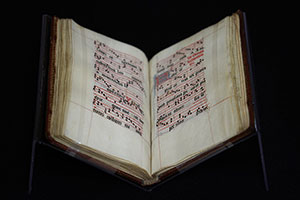
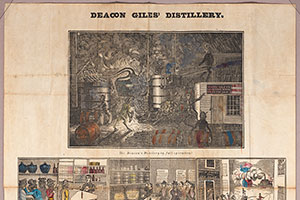
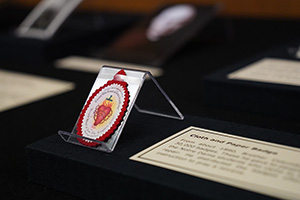
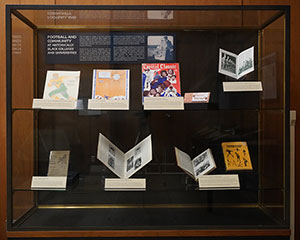
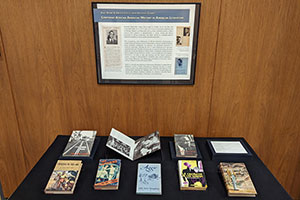
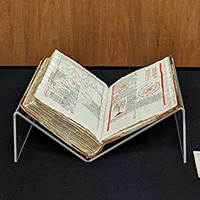
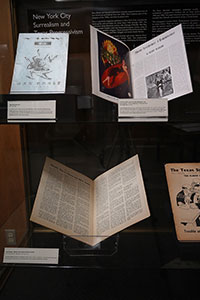
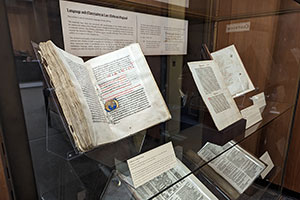
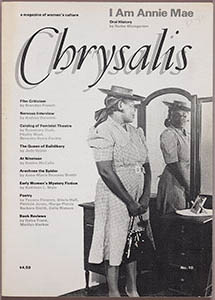
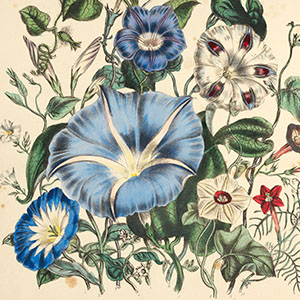
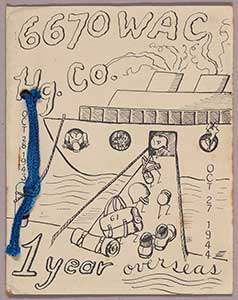
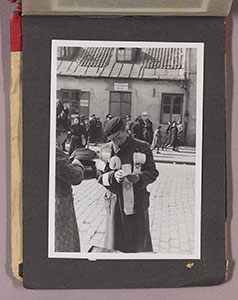
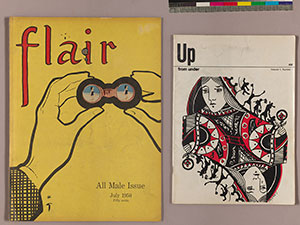
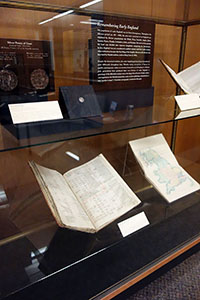
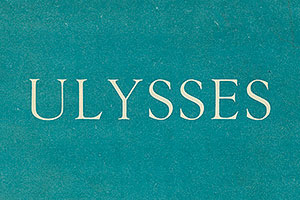
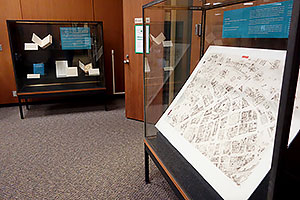
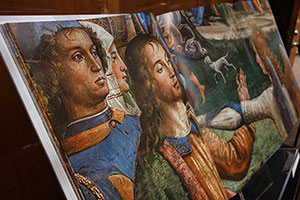

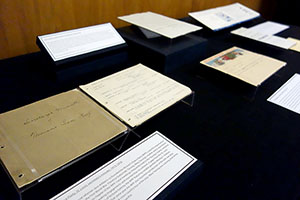
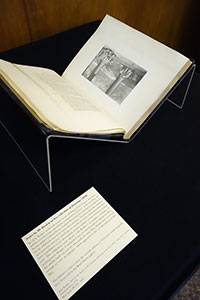
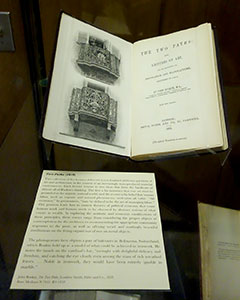
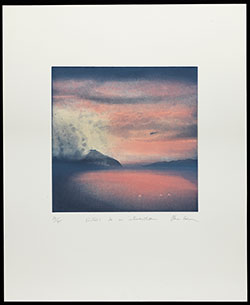
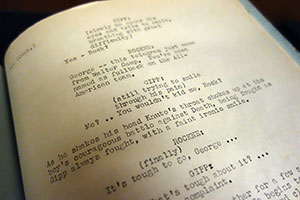
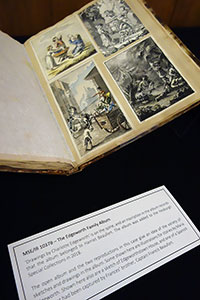
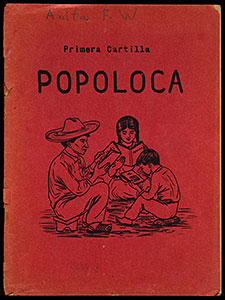
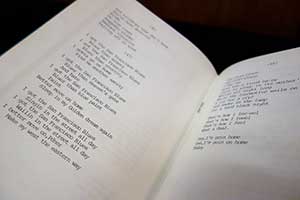
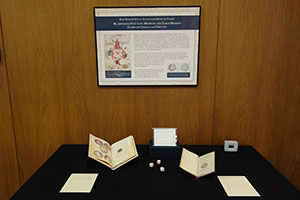
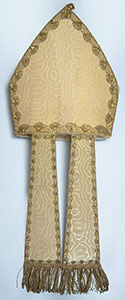
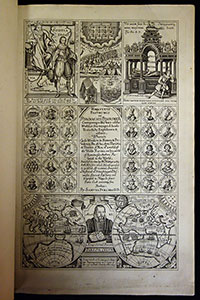
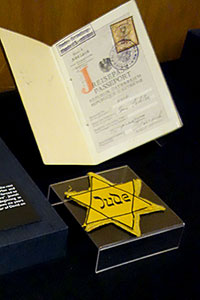
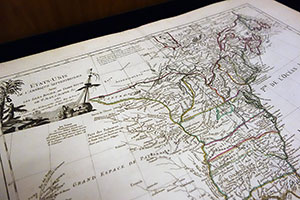
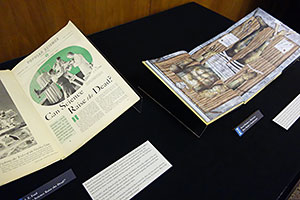
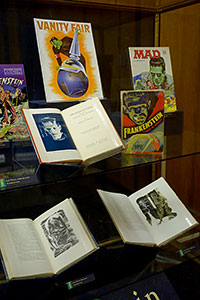
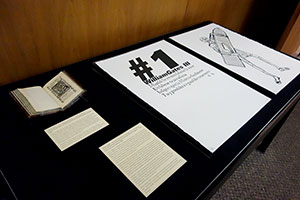
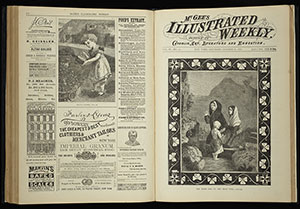
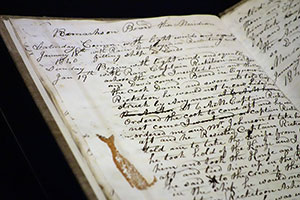
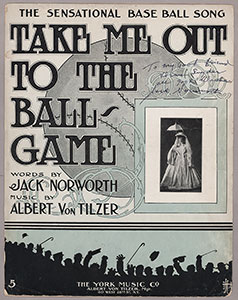
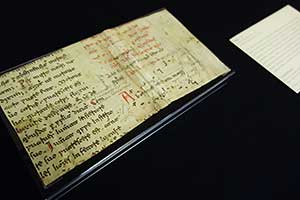
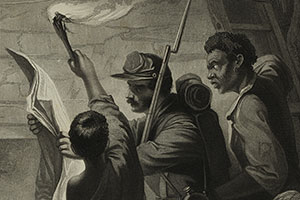
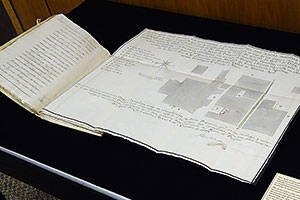
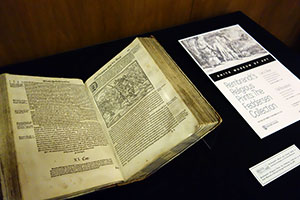
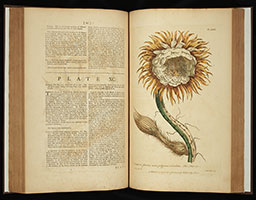
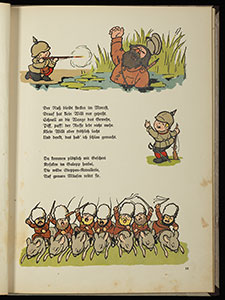
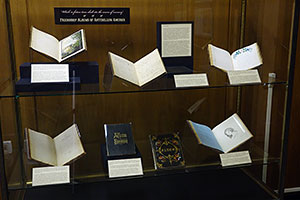
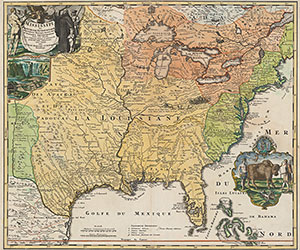
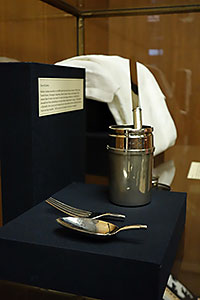
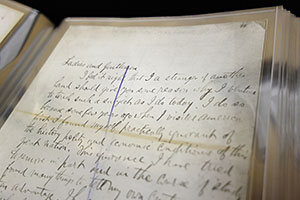
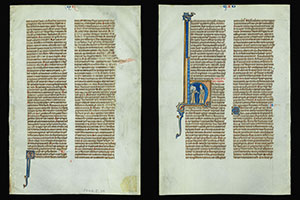
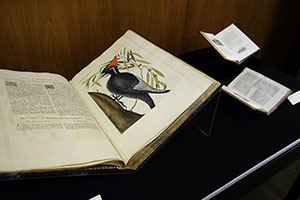
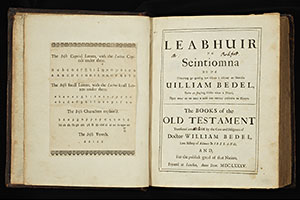
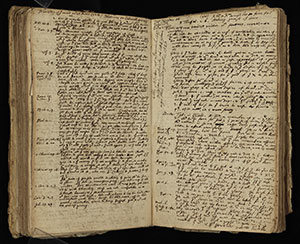
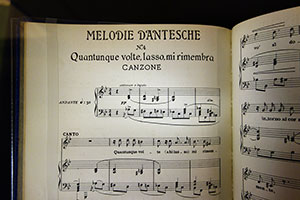
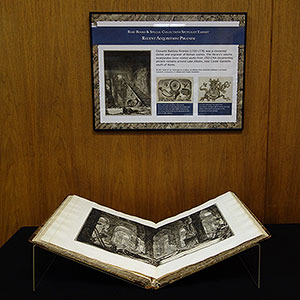
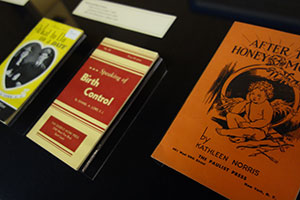
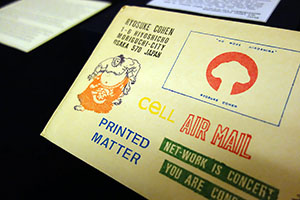
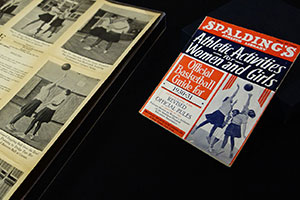
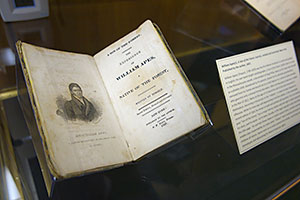
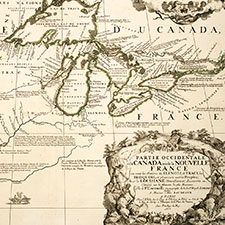
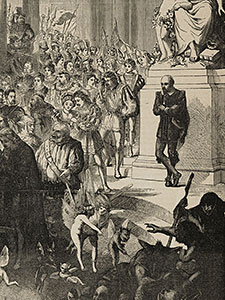
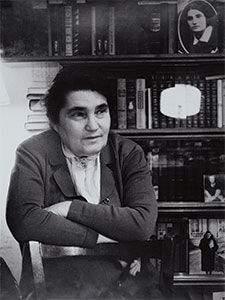
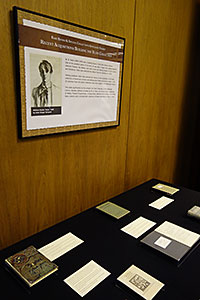
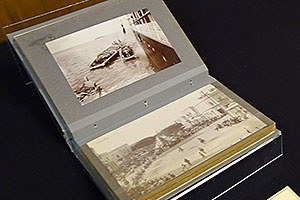
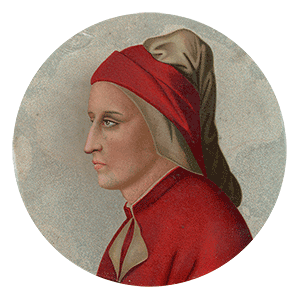
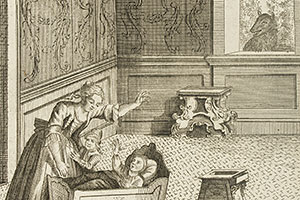
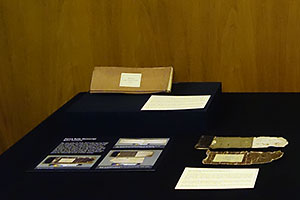
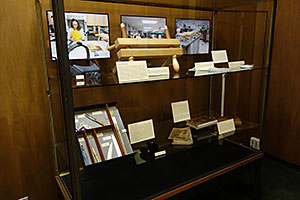
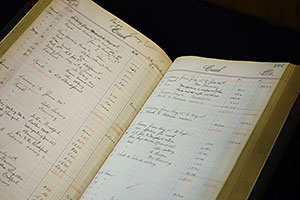
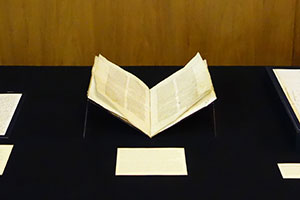
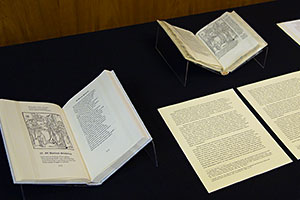
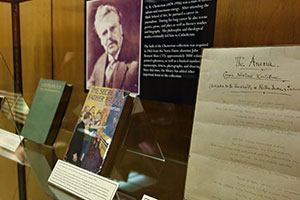
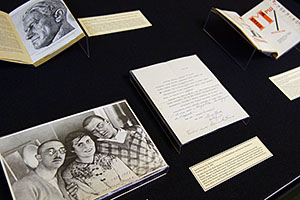
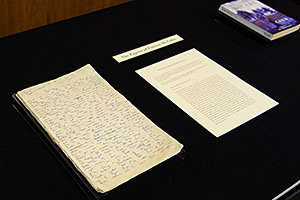
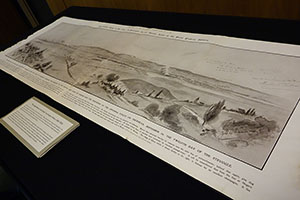
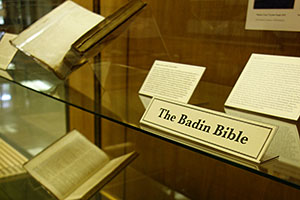
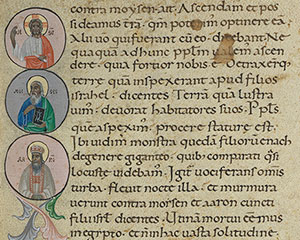
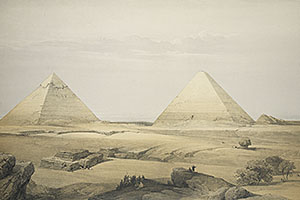
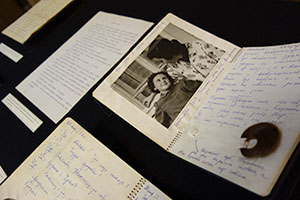
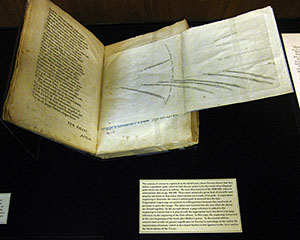
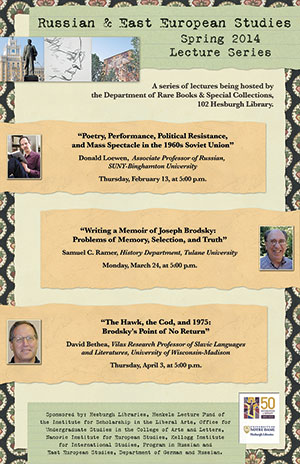

 |
| 